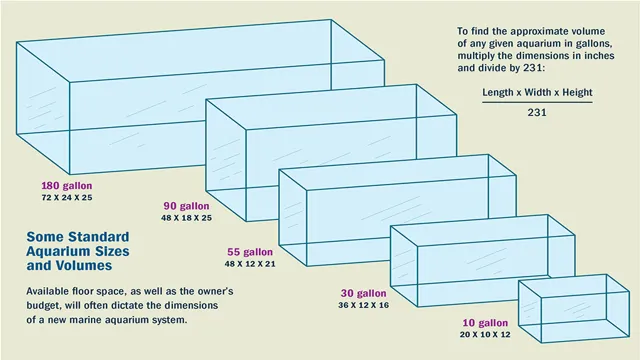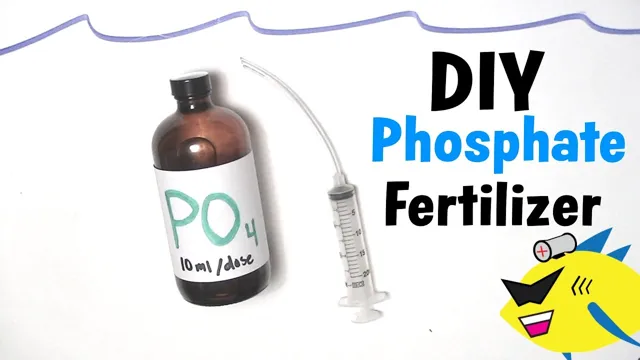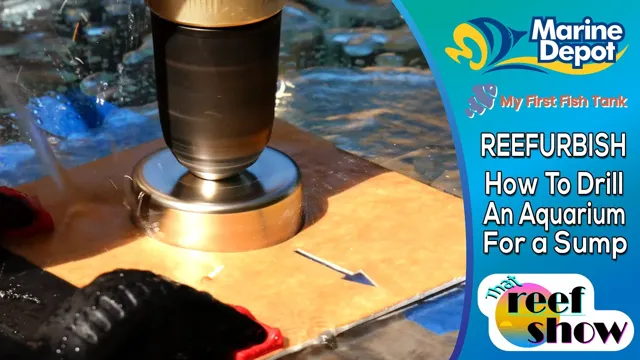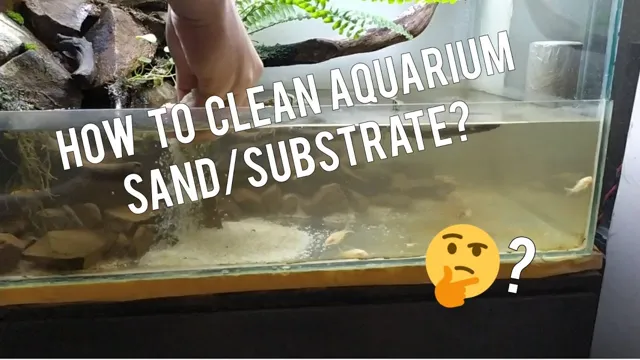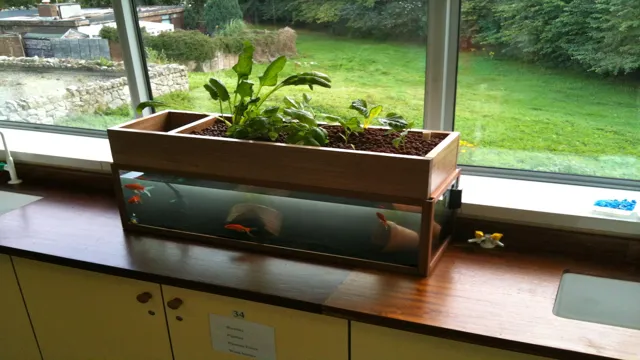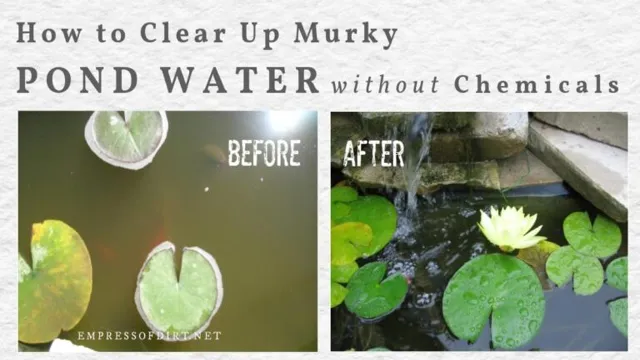If you’re a saltwater aquarium enthusiast, you know that creating a beautiful aquascape is an art. It’s the art of bringing together different elements in such a way that they form a visually stunning underwater world. The beauty of saltwater aquascapes is that they’re not just aesthetically pleasing—their proper design can also promote the health and well-being of your aquatic inhabitants.
Saltwater aquascaping allows for even greater creativity than freshwater aquariums, with its wide variety of rocks, corals, and other natural decor. However, creating a beautiful and functional marine environment is not as simple as just piling up rocks and adding some plants. It’s about understanding the scientific principles of aquascaping, applying your knowledge of marine environments, and using your imagination and creativity.
In this blog post, we’ll provide you with tips and tricks on how to create a stunning saltwater aquascape that will impress your friends and provide a healthy environment for your aquarium inhabitants. From selecting the proper substrate to choosing the right rocks and corals, we’ll cover everything you need to know about creating a beautiful saltwater environment. So, are you ready to dive in and create your own underwater masterpiece? Let’s get started!
Understanding the Basics
If you’re interested in setting up a beautiful saltwater aquarium, learning how to aquascape is an essential first step. Aquascaping is the art of arranging rocks, driftwood, and live plants in aquariums to create a visually stunning underwater landscape that mimics the natural habitat of marine animals. When it comes to saltwater aquascaping, complexity is the key.
You’ll want to choose a variety of rocks and other elements with unique shapes, textures, and colors to create a diverse and vibrant environment. It’s important to remember that different marine creatures require different environments, so make sure you research the specific needs of the fish, coral, and other organisms you plan to keep. Additionally, establishing a beneficial bacterial cycle is crucial, as it helps to maintain a healthy and stable aquarium system.
By taking the time to properly aquascape and maintain your saltwater aquarium, you can create a thriving ecosystem that provides a stunning and tranquil atmosphere for years to come.
Choose the Right Tank Size for Your Needs
When it comes to choosing the right tank size for your needs, understanding the basics is key. First and foremost, it’s important to consider what you’ll be using the tank for. Will it be used for storing water or fuel? Will it be used for agriculture or industrial purposes? Once you have a clear understanding of the tank’s purpose, you can then move on to determining the appropriate size.
It’s important to choose a tank that is large enough to meet your needs, but not so large that it takes up unnecessary space. Remember, a larger tank will require more resources to maintain and may not be cost-effective in the long run. By weighing the pros and cons and carefully considering your specific needs, you can choose the perfect tank size to meet your unique requirements.
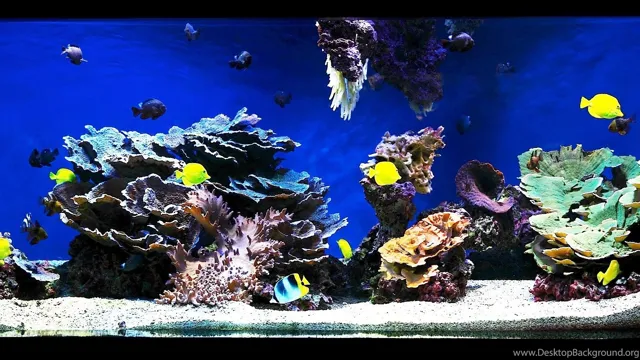
Select the Right Type of Substrate
When it comes to setting up a new aquarium, choosing the right substrate is essential for creating a healthy and vibrant environment for your fish and plants. There are a variety of substrates available, including sand, gravel, and soil, each of which has its own benefits and drawbacks. Sand is a popular choice as it’s easy to clean and maintain, and provides a natural look and feel.
Gravel is another common option that can add a variety of colors and textures to your aquarium. Soil substrates, on the other hand, are ideal for planted tanks as they provide essential nutrients for the plant’s growth. It’s important to understand the individual requirements of your fish and plants before deciding on the type of substrate, and to choose one that is compatible with your aquarium’s filtration system.
By selecting the right type of substrate, you’ll be providing your aquatic pets with a healthy and comfortable home that will allow them to thrive.
Decide on the Right Lighting and Filtration
When it comes to setting up an aquarium, lighting and filtration are crucial elements to consider. Proper lighting is essential for the health of your aquatic plants and animals, while proper filtration helps maintain the quality of the water. The type of lighting and filtration system that you choose will depend on the size and type of your aquarium, as well as the types of fish and plants that you plan to house.
For lighting, it’s important to choose a system that provides the right spectrum of light for your aquarium. This means selecting a system that emits light within the range of 5,500 to 10,000 Kelvin, which is ideal for both plant growth and fish coloration. Additionally, you’ll need to consider the duration and intensity of the lighting, as well as any natural light that may already be present in the room.
When it comes to filtration, there are several types of systems to choose from, including hang-on-back filters, canister filters, and sponge filters. The type of filtration that you choose will depend on the size of your tank and the types of fish and plants that you plan to keep. Generally, you’ll want a filtration system that is at least capable of filtering the entire volume of your tank three to four times per hour.
In conclusion, deciding on the right lighting and filtration for your aquarium can make all the difference when it comes to the health and wellbeing of your aquatic plants and animals. By selecting the appropriate system for your tank, you can ensure that your aquarium remains a healthy and thriving ecosystem for years to come.
Selecting Your Aquatic Plants and Corals
When it comes to aquascaping a saltwater aquarium, selecting the right plants and corals is key to creating a beautiful and thriving ecosystem. It’s important to choose species that are well-suited to the specific needs of your aquarium, such as lighting, water flow, and pH levels. Some popular choices for saltwater aquariums include anemones, zoanthids, and soft corals like mushrooms and leathers. (See Also: How to Clean Aquarium Cover: Simple and Effective Methods)
Be sure to do your research and choose plants and corals that are compatible with one another, as well as with any fish or invertebrates in your tank. Don’t forget to consider factors like growth rate and size when choosing your plants and corals, as it’s important to ensure that they will have enough space to thrive in the long term. By carefully selecting your aquatic plants and corals, you can create a beautiful and healthy saltwater aquarium that will provide hours of enjoyment and relaxation.
Choose Healthy Plants and Corals
When it comes to your aquatic setup, choosing the right plants and corals can make all the difference. Not only do they add beauty to your tank, but they also play a vital role in maintaining healthy water conditions. One crucial aspect to consider when selecting your aquatic plants and corals is their current state of health.
Choose only healthy specimens that have strong, vibrant colors and show no signs of disease or infection. Sickly organisms can harm the other inhabitants in your tank and can quickly spread illness throughout your aquatic ecosystem. Additionally, research the requirements of each species and ensure that they are suitable for your tank’s water conditions and lighting.
By selecting healthy, compatible species, you can create a thriving aquatic environment that will be the envy of any aquarium enthusiast. Remember, investing in quality plants and corals pays off in the long run, both for the health of your ecosystem and the enjoyment of your marine life.
Balance the Color and Texture of Your Aquascape
When it comes to creating a beautiful and balanced aquascape, selecting the right aquatic plants and corals is essential. The key is to find a combination of different species that not only complement each other in terms of color and texture, but also have similar needs in terms of lighting, nutrients and water chemistry. For example, if you are going for a lush, green look, you might want to consider plants like java moss, java fern and anubias, which thrive in low to medium light and CO2 conditions.
If you prefer a more colorful and diverse coral reef, you might want to mix hard corals like stony corals, soft corals like mushroom corals, and various types of anemones. By choosing plants and corals that are compatible with each other and your tank environment, you can create a stunning and sustainable underwater garden that will thrive for years to come. So, take your time and do your research, and don’t be afraid to experiment until you find the perfect combination that speaks to you and your aquatic inhabitants.
Arranging Your Aquatic Plants and Corals
When arranging your aquatic plants and corals in a saltwater aquarium, there are a few things that you need to keep in mind to create a beautiful and functional aquascape. First and foremost, you need to consider the species of plants and corals that you have chosen. Some species are better suited for certain areas of the tank than others, so it’s important to do your research and make sure that you are placing them in the right spot.
Additionally, you need to think about the shape and texture of your plants and corals. Mixing different shapes and textures can create a visually appealing aquascape that is both interesting and natural looking. Finally, you should consider the overall design of your tank and how you want your plants and corals to play into that design.
By taking these factors into account and arranging your aquatic plants and corals in a thoughtful and deliberate way, you can create a stunning saltwater aquarium that you can be proud of.
Create a Focal Point with a Dominant Plant or Coral
When it comes to arranging aquatic plants and corals in your aquarium, one effective technique is to create a focal point with a dominant plant or coral. This means selecting one especially striking and eye-catching specimen and featuring it prominently in the center or front of the tank. Not only does this create visual interest, it also helps to anchor the overall design scheme.
Choose a plant or coral that complements the colors and shapes of your other specimens, and make sure it has plenty of space to grow and thrive. You can also use additional plants or corals to frame and enhance the dominant specimen, creating a cohesive and visually appealing display. Not sure where to start? Consider a bold and sculptural coral like a brain coral or staghorn coral, or a boldly colored plant like a red lotus or sword plant.
With a little bit of thought and planning, you can create a stunning and engaging aquascape that showcases the natural beauty of your aquatic specimens.
Use Different Sizes and Shapes to Create Depth
When arranging aquatic plants and corals in your aquarium, it is important to use different sizes and shapes to create depth. This will not only add visual interest but also make your aquarium feel more natural and realistic. To achieve this, you can plant taller plants in the back of the tank and shorter ones in the front.
You can also use different shapes, such as tall narrow plants or bushy ones with many stems, to create variation and texture. Additionally, try to position corals and other decorations at different heights to add dimension. By using a variety of shapes and sizes, you can create a beautiful and dynamic underwater landscape that will captivate anyone who sees it.
Try using this technique and see how your aquarium transforms into a natural wonderland. (See Also: How to Lower Nitrate and Nitrite in Aquarium: Top Effective Ways)
Add Movement to Your Aquascape with Flowing Plants or Swirling Fish
Aquascape Aquascaping is more than just adding beautiful aquatic plants and corals to your aquarium. It’s about transforming your aquarium into a stunning underwater ecosystem that mimics the natural world. When arranging your aquatic plants and corals, it’s important to consider their placement to create a sense of depth and dimensionality, allowing for a natural flow of movement.
Adding flowing plants such as water wisteria or amazon sword can add a sense of lightness and elegance to your aquascape, while swirling fish can add bursts of activity and excitement. Consider creating a focal point with a tall plant or coral to draw the eye, yet make sure to leave enough negative space for the viewer to appreciate the entire setup. With mindful placement and thoughtful additions, you can create an aquatic world that’s both visually stunning and deeply relaxing.
Maintaining Your Saltwater Aquascape
Maintaining a saltwater aquascape requires effort and dedication, but the results are worth it. Start by performing regular water changes to keep the water quality in check. Check the salinity levels and adjust them accordingly to maintain the health of your fish and corals.
Clean the glass walls and remove any dead or decaying matter from the bottom of the tank. Regularly monitor the equipment, such as protein skimmers and filters, to ensure they are functioning properly. When it comes to aquascaping, keep in mind the natural environment of your fish and corals.
Create a realistic and aesthetically pleasing layout, utilizing different types of live rock and creating tunnels and caves for your fish to explore. Don’t forget to add some colorful corals and invertebrates to enhance the beauty of your saltwater aquascape. With a little bit of maintenance and attention to detail, your saltwater aquarium can become a stunning underwater paradise.
Maintain Your Water Parameters
Maintaining your saltwater aquascape requires constant attention and dedication. One of the most important factors in maintaining a healthy and vibrant saltwater aquarium is monitoring and maintaining your water parameters. Properly maintained water parameters are crucial for the longevity and well-being of all the inhabitants in your tank.
Regularly testing your water for parameters such as pH, ammonia, nitrate, nitrite and salinity levels, will give you an idea of the health of your water and can flag up any issues before they become catastrophic. Inevitably, the elements in your saltwater tank will become imbalanced over time, and your job as an aquarist is to keep these elements in check. Many common issues like algae blooms, coral stress and even fish sickness are often caused by the lack of attention to water parameters.
With diligence and a conscientiousness attitude, you can maintain your saltwater aquascape and keep your living ecosystem healthy and beautiful.
Clean Your Tank Regularly
Maintaining your saltwater aquascape can be challenging, but one of the most crucial tasks you need to do is regular tank cleaning. Dirty and neglected tanks can lead to a variety of problems, such as the buildup of nitrates, phosphates, and other harmful substances. These, in turn, can cause algae blooms, reduce oxygen levels, and ultimately harm your fish and other aquatic life.
By maintaining a regular cleaning schedule, you can prevent these issues from occurring and ensure that your saltwater ecosystem remains healthy and vibrant. A well-maintained tank not only promotes the well-being of your fish but creates a beautiful and enjoyable environment for you to admire and appreciate. Don’t forget to use a high-quality water conditioner, such as Seachem Prime, to keep your water pristine too.
Remember, a healthy tank means happy fish, and a happy fish means a happy aquarist!
Trim and Prune Your Plants and Corals
Maintaining a saltwater aquascape is not just about setting it up; it’s also about keeping it healthy and thriving. One crucial aspect of maintaining a saltwater aquascape is trimming and pruning your plants and corals. Overgrowth of plants and corals can hinder the aquascape’s health and affect its appearance.
By trimming and pruning, you can keep your aquascape looking neat and tidy while also preventing harm to its inhabitants. It’s essential to use the right tools and techniques when trimming. For example, trimming shears are perfect for cutting back soft corals, while razor blades are best for removing mass amounts of algae.
Overall, trimming and pruning plants and corals help maintain a healthy, vibrant, and stunning aquascape for you and its inhabitants to enjoy. (See Also: How to Prepare Driftwood for Aquariums: A Step-by-Step Guide to Safe and Healthy Aquarium Decor)
Monitor Your Fish and Invertebrates for Signs of Stress
Maintaining a saltwater aquascape can be a fulfilling yet challenging task. One of the most important aspects of keeping your fish and invertebrates healthy is monitoring them for signs of stress. Stress can manifest itself in a variety of ways, including loss of appetite, changes in behavior, and physical symptoms like fin rot or discoloration.
By keeping a close eye on your aquatic inhabitants, you can catch any problems early on and take action to address them. It’s also crucial to maintain proper water parameters, such as temperature, salinity, and pH levels, to ensure a stable and healthy environment. Regular water changes and equipment maintenance are also essential aspects of maintaining your saltwater aquascape.
Remember, a healthy and vibrant saltwater aquarium depends on careful monitoring and attention to detail.
Conclusion
In conclusion, aquascaping a saltwater aquarium is like creating a mesmerizing underwater landscape that evokes a sense of awe and wonder. It’s an art form that requires a bit of science, creativity, and patience. The key is to plan your design, select the right equipment and materials, and carefully arrange your live rocks and corals to create a natural and harmonious environment.
By paying attention to details such as lighting, water flow, and maintenance, you can showcase the incredible diversity of marine life and create a stunning display that will be the envy of all your friends. So dive in and let your imagination run wild, and before you know it, you’ll be swimming in compliments for your aquascape masterpiece!”
FAQs
What is aquascaping?
Aquascaping is the art of designing and arranging plants, rocks, and other decorative materials in an aquarium to create a visually appealing underwater landscape.
Why is aquascaping important in a saltwater aquarium?
Aquascaping in a saltwater aquarium is important for several reasons, including providing a natural environment for fish and other aquatic organisms, promoting healthy growth of aquatic plants, and maintaining water quality.
How do I choose the right plants for my saltwater aquarium?
When choosing plants for a saltwater aquarium, it is important to consider factors such as lighting and water flow requirements, as well as the compatibility of the plants with other organisms in the tank.
What types of rocks are best for aquascaping in a saltwater aquarium?
Rocks such as live rock, dry rock, and reef rock are commonly used in saltwater aquariums for their aesthetic appeal and biological filtration properties.
How do I create a natural-looking aquascape in my saltwater aquarium?
To create a natural-looking aquascape, it is important to consider factors such as the placement of rocks, plants, and other materials, as well as the use of natural-looking substrate and lighting.
Can I aquascape a saltwater aquarium without using live rock?
Yes, it is possible to aquascape a saltwater aquarium without using live rock. Dry rock and other materials can be used instead, although they may require additional biological filtration methods.
How do I maintain the health and appearance of my aquascape in a saltwater aquarium?
Maintaining the health and appearance of an aquascape in a saltwater aquarium requires regular maintenance such as water changes, cleaning, and monitoring water quality parameters. Additionally, proper feeding and care of fish and other organisms in the tank can also help to maintain the overall health and appearance of the aquarium.


